Memories Locked in Keys Streaming down on Venice: Unique Experience Born in the Japan Pavilion
Chiharu Shiota (Artist)
Hitoshi Nakano (Curator of the Kanagawa Arts Foundation)
On July 28, a briefing session was held at the Japan Foundation, JFIC Hall "Sakura" to present the exhibition at the Japan Pavilion conducted as part of the 56th International Art Exhibition - la Biennale di Venezia. Hitoshi Nakano, the curator of the exhibition, and Chiharu Shiota, the exhibiting artist, introduced their project, The Key in the Hand, an exhibition held at the Japan Pavilion. The project was widely publicized in newspapers and art magazines across Europe, and attracted some 130,000 visitors (as of July 20, 2015). At the briefing session, the presenters shared their stories of the creative process leading to the exhibition, the concept of the installation, and the local response to their work. Apparently, this year the biennale was held one month earlier than customary due to the impact of Expo Milano 2015, and there were numerous irregular happenings in the course of the event. As many people who have experienced the International Art Exhibition in the past agreed, the space of the Japan Pavilion is rather complex, and this year the project apparently encountered various unforeseen circumstances. This article presents a condensed summary of the briefing session and some little-known fascinating episodes shared with the audience.
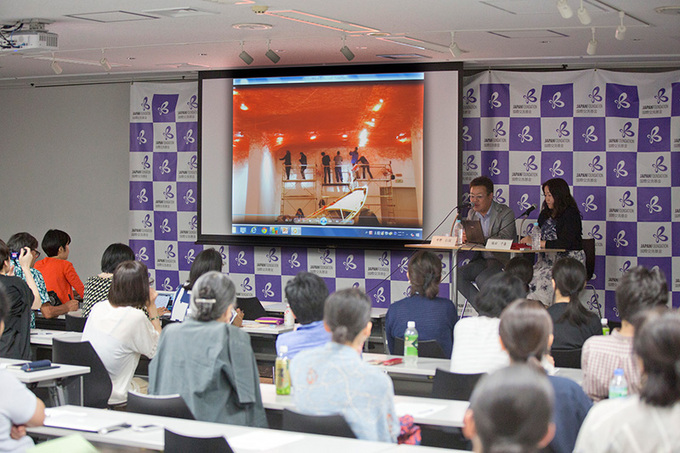
Collaboration derived from performing arts
As usual, the preparations for the exhibition at the Japan Pavilion started with a competition among several selected candidates for the position of exhibition curator. Hitoshi Nakano received a formal invitation to participate in the competition in January 2014. The deadline for submission of proposals was in just two months, so initially Nakano felt rather anxious about formulating a project in such a short period. Nevertheless, he was confident that if he worked with Berlin-based artist Chiharu Shiota, the two would come up with a wonderful exhibition, and this inspired him to invite Shiota to participate in the project.
In 2007, Nakano curated Shiota's solo exhibition at the Kanagawa Kenmin Hall Gallery, but in fact their first encounter took place four years earlier. Back in 2003, a creative performance that combined the three elements of Bunraku, art, and contemporary music, was planned by the Kanagawa Arts Foundation. Chiharu Shiota was in charge of the art elements of this creative performance, and that experience marked the start of her working relationship with Nakano. The curator, whose somewhat unusual career at the foundation began in the field of performing arts, and Shiota, who is recognized for her talent in spatial construction, continued to work together on numerous stage art projects, which require the ability to make decisions in a split second. This continued collaboration bore fruit at the biennale in Venice. After a presentation before the selection committee in April, they were chosen to represent Japan at the 56th International Art Exhibition.
A stream of precious memories, handed down across generations
Some of the readers of this article may have already seen the beautiful exhibition.
An important characteristic of the exhibition at the Japan Pavilion are the 180,000 keys collected from all over the world. (Initially, the artist planned to collect 50,000 keys, but with the cooperation of people who donated their keys to special boxes set in art museums around the U.S. and Japan, and Japan Lock Security, an association of manufacturers of duplicate keys and key retail stores, Shiota collected more than three times the planned amount.) The keys are attached to threads of red yarn suspended like a spider web from the ceiling, streaming down on two old boats, which, according to Shiota, symbolize two upturned palms.
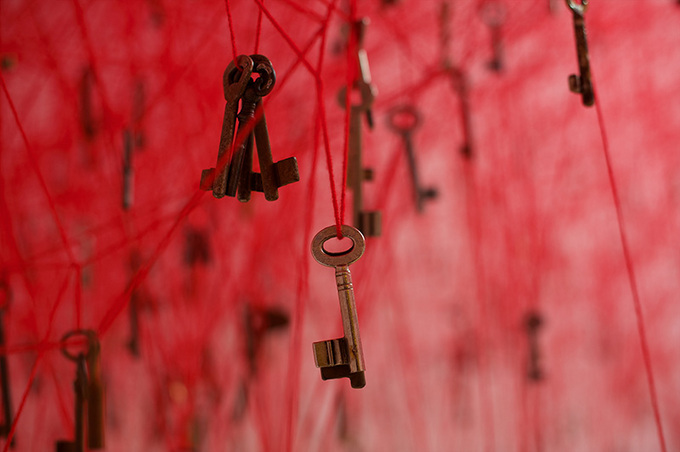
Installation image of the Key in the Hand, 2015, Photo by Sunhi Mang, Courtesy of Chiharu Shiota
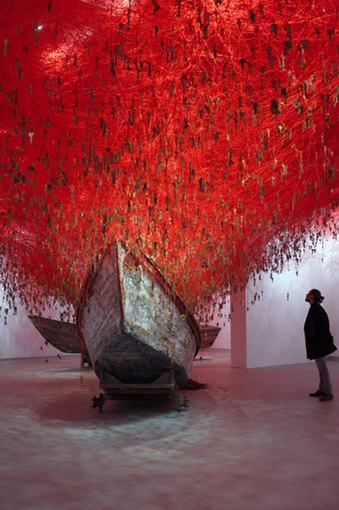
Photo by Sunhi Mang, Courtesy of Chiharu Shiota
As symbolic elements of the installation the keys represent things we hold dear and the memories of our predecessors, and the act of entrusting them to others creates a sense of individual and social responsibility. Furthermore, when adults hand keys down to children, they are simultaneously placing the future in their children's hands. The streams of keys falling from the ceiling over the two boats, which are symbolic of children's palms, is so strong that many keys spill over onto the ground. (Some 50,000 of the total of 180,000 keys are suspended from the ceiling, and the remaining 130,000 are spread over the floor or the boats.) This may represent the magnitude of the responsibility and future that entrusting someone with your keys entails. Nakano added that the keys, which perfectly fit in an adult's palm, sometimes look very large when placed in the small hands of children. Shiota also shared that during the process of creating the installation, she sometimes felt that the keys took human form, and as she tied them with the red yarn, she felt as if she was in fact connecting people.
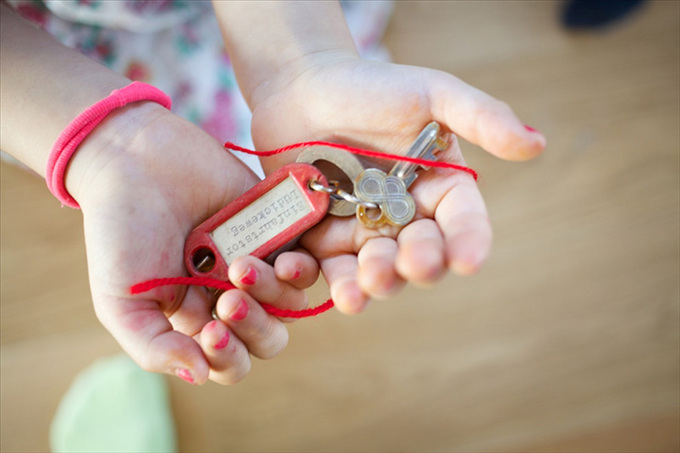
The Key in the Hand, 2014, Courtesy of Chiharu Shiota
Designed by Takamasa Yoshizaka, the Japan Pavilion has in its heart a symbolic cylindrical "well" that connects the exhibition hall on the second floor with the pilotis on the first floor. The artist and the curator made skillful use of this challenging structure, which raises the level of complexity of exhibiting in the Japan Pavilion. The dynamic image of the "streams" of keys passes through the well into the pilotis below. (In reality, the well was closed with a lid, so there is no physical link between the installations on the first and the second floor.) In the pilotis, the artist displayed visual works on the two themes of memories before we are born and memories immediately after birth. In creating these works, Shiota was inspired by the extraordinary experience of hearing her then young daughter talk about memories from before and immediately after she was born. To create them, the artist visited kindergartens in Japan and Germany and interviewed numerous children. In the unique vertical structure of the installation, Nakano apparently incorporated the question "Are the memories described by children truly part of their own identity or are they conveyed memories that our predecessors try to share with us through children?"
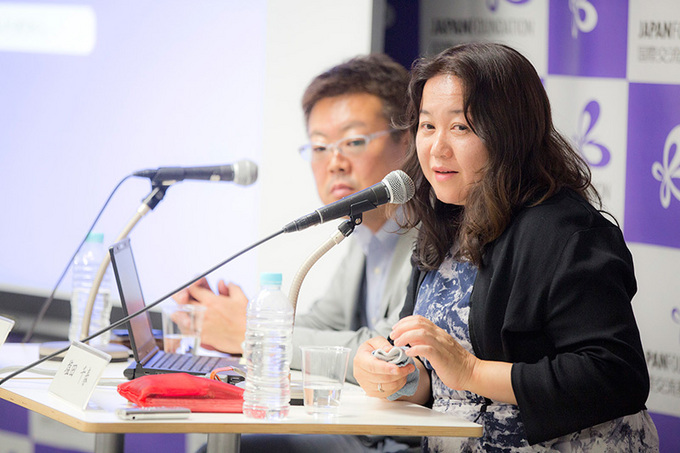
Chiharu Shiota (right) and Hitoshi Nakano (left) field questions from the audience.
Issues posed by a space of "intuitive perception"
This year's exhibition at the Japan Pavilion was broadly acclaimed and photos of the installation made the front pages of local media.。
Okwui Enwezor, the director of the 2015 Venice Biennale, highlighted the characteristics of the exhibition as a curation that tackles various social issues from diverse angles, comparing it with Documenta 11 (2002). As an exhibition that examines from a critical perspective the trends of globalization from the second half of the 1990s through the first half of the 2000s, Documenta 11 was preceded by discussions among intellectuals and activists in four cities around the world, and its focus was placed not simply on artistic beauty, but also on social movements, reflecting with vivid gravity the spirit of the times. This year, however, there is an impression that issues of even greater gravity than those posed in 2002, such as the collapse of the Greek economy and the rise of ISIL, have constricted the scope of the Venice Biennale overall. There are numerous works with strong political implications, but they have perhaps failed to sufficiently bring to the fore the unique power of art to transform volatile situations through humor and out-of-the-box thinking.
Against this backdrop, the installation at the Japan Pavilion was favorably received because it gave a spatial representation of the dissimilation that appeals to purely physiological aspects of existence such as the human body and visual sensation. It is a space that does not require intellectual analysis and understanding, but inspires intuitive perception. This explains why the numerous visitors of the Japan Pavilion were moved by Shiota's work and identified with it, and why photographs of the installation received front page coverage in local newspapers reporting on the opening of the biennale.
In conclusion, Shiota looked back on her participation in the project, sharing that despite the arguments she had with the curator Nakano, and the numerous trivial problems that occurred, in the final week she managed to devote all her energy to the installation, driven by the realization that she was the only one who could create this work and that she would regret it for the rest of her life if she simply gave up. That is precisely why Shiota felt such great happiness at her successful completion of the installation. As a result of her efforts in the Venice Biennale, Shiota was invited to the 20th Biennale of Sydney in 2016. The artist concluded the briefing session with the powerful statement "I am the only one who can do it. I intend to devote all my current potential to creating the installation for this project."
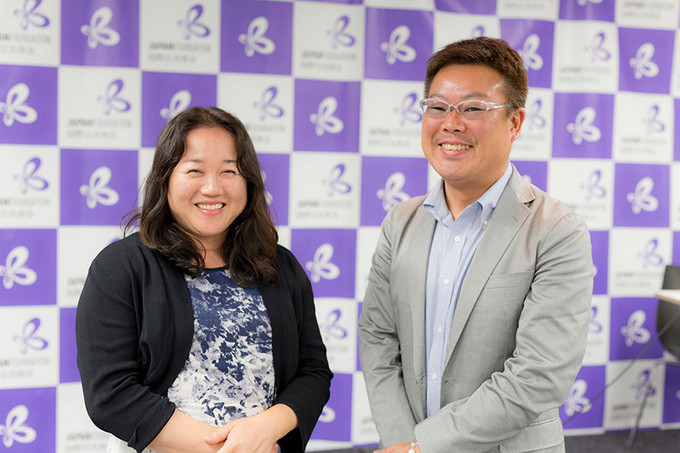 (Edited by Taisuke Shimanuki, Photos of the briefing session by Kenichi Aikawa)
(Edited by Taisuke Shimanuki, Photos of the briefing session by Kenichi Aikawa)
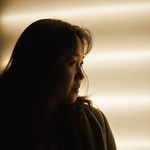 Chiharu Shiota
Chiharu Shiota
Chiharu Shiota was born in Osaka Prefecture in 1972 and lives in Berlin. Confronting fundamental human concerns like life and death, she explores questions such as "What does it mean to be alive?" and "What is existence?" in large-scale installations that make use of a variety of media including sculptural elements, photography, and video. In 2007, she was awarded the Minister of Education, Culture, Sports, Science and Technology's Art Encouragement Prize for New Artists for her solo exhibition From In Silence, held at the Kanagawa Kenmin Hall Gallery. She has held solo exhibitions at the Museum of Art, Kochi (2013), Marugame Genichiro-Inokuma Museum of Contemporary Art, Kagawa (2012), Casa Asia, Spain (2012), and the National Museum of Art, Osaka (2008) among others. Shiota has also participated in numerous international exhibitions such as the Kyiv International Biennale of Contemporary Art, Setouchi Triennale, Aichi Triennale, Moscow Biennale of Contemporary Art, International Biennial of Contemporary Art of Seville (Spain), Gwangju Biennale (South Korea), and Yokohama Triennale. In 2012, Shiota was appointed as a Japan Cultural Envoy by the Agency for Cultural Affairs of Japan and visited Australia.
www.chiharu-shiota.com
Portrait, Photo by Sunhi Mang, Courtesy of Chiharu Shiota
![]()
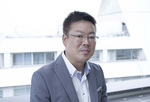 Hitoshi Nakano
Hitoshi Nakano
Curator at Kanagawa Arts Foundation Hiroshi Nakano was born in Kanagawa Prefecture in 1968. He completed a master's program in art history at the Graduate School of Letters, Keio University. Among the main performing arts events he has organized are Ongakushigeki: Ikutagawa Monogatari - Noh "Motmezuka" ni Motozuku [Musical: the tale of Ikutagawa - based on the Noh play "Motomezuka"] (New Contemporary Noh, Kanagawa Kenritsu Ongakudo, 2004), Aruma Mara to Uin Seikimatsu no Geijutsuka tachi [Alma Mahler and artists of the fin-de-siècle Vienna] (music/art, Kanagawa Kenritsu Ongakudo, 2006), and Seitan 100 nen Jon Keji Semegiau Jikan to Kukan [John Cage Centenary: a struggle between time and space] (music/dance, Kanagawa Kenmin Hall Gallery, 2011). In the field of contemporary art, he has curated the following exhibitions: Chiharu Shiota: From In Silence (Kanagawa Kenmin Hall Gallery, 2007), Takehito Koganezawa: Between This and That (Kanagawa Kenmin Hall Gallery, 2008), Everyday Life/Another Space (Kanagawa Kenmin Hall Gallery, 2009), Harbor of Design - Katsumi Asaba Exhibition (Kanagawa Kenmin Hall Gallery, 2009, 2010), Taro Izumi: Kneading (Kanagawa Kenmin Hall Gallery, 2010), Everyday Life/Hidden Reasons (Kanagawa Kenmin Hall Gallery, 2011), Hiraki Sawa: Whirl (2012), Everyday Life/Off the Record (Kanagawa Arts Theatre, 2014), and Lyota Yagi: Science/Fiction (Kanagawa Kenmin Hall Gallery, 2014). Nakano is also a research fellow at the Institute for Arts and Cultural Resources Management, and a guest lecturer at Tokai University and Joshibi University of Art and Design.
Portrait photo by Masanobu Nishino
Back Issues
- 2023.12. 7 Movie Theaters aroun…
- 2023.6.16 The 49th Japan Found…
- 2023.4.24 The 49th Japan Found…
- 2022.12.27 Living Together with…
- 2022.12.27 Living Together with…
- 2022.8.12 Inner Diversity <…
- 2022.3.31 The 48th Japan Found…
- 2022.3.29 Beyond Disasters - T…
- 2021.11.29 Crossing Borders, En…
- 2021.4.13 Crossing Borders, En…

